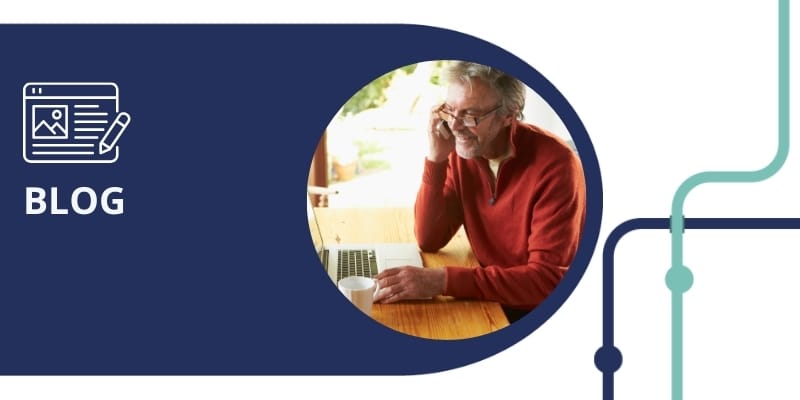Over the past decade, contactless care has become increasingly prominent in healthcare. While it might have sounded futuristic a decade or so ago, it’s an important component of healthcare consumerism. With the COVID-19 pandemic accelerating adoption of contactless technology in most consumer-facing industries, prospective patients are increasingly expecting to access and manage their healthcare through more convenient, contactless means.
What exactly is contactless care? Basically, it describes a patient experience delivered in a way that avoids unnecessary person-to-person contact. This type of care leverages digital technologies and tools to offer healthcare and health-related services for everything from appointment scheduling and contactless patient intake to virtual consult and online payment.
Today’s patients expect a seamless experience, similar to that offered in industries such as retail and hospitality. They want healthcare services that are not only convenient but also enable them to connect with providers on their terms.
Contactless care isn’t only a bonus for a lot of individuals — it’s a requirement. Many consumers are looking for expanded digital capabilities that enable them to complete more tasks online, at their convenience, with over 85% of consumers interested in making payments, completing pre-visit forms, providing insurance, and even alerting the front desk that they’ve arrived for a visit via digital means.
Many healthcare providers realize the benefits of contactless care, too. Roughly 93% of physicians believe these tools provide an advantage in their ability to care for their patients.
Promoting Patient and Staff Satisfaction
Contactless care offers many more benefits than just convenience. Along with meeting consumer demand for ease, access, transparency, and speed, it aids in mitigating crowded waiting rooms, high-touch areas, wait times, and unnecessary travel.
Contactless care can even help improve health outcomes by delivering safe, timely, and consistent care that’s accessible and affordable. By putting patients at the center, it often drives higher levels of engagement and satisfaction. Additional advantages of contactless care include:
- Fewer medical errors
- Augmented patient safety
- Improved patient-provider communication
- Increased HIPAA compliance
- Enhanced provider and staff productivity and satisfaction
- Fewer repetitive administrative tasks
- Enhanced patient loyalty and retention
How to Provide a Contactless Patient Care Journey
Patients should be able to experience a contactless patient journey, from pre-visit registration all the way to post-appointment payment. Medical groups utilizing the technology to produce this, however, are best served with tools that enable them to increase workflow efficiencies while meeting patient needs.
The most popular digital health tools for contactless care are those that automate tasks before, during, and after a patient’s appointment. More patient control means less work for medical group staff. Prime examples of these tools are those used for appointment scheduling, check-in, and payment.
Online Patient Scheduling
Patient registration and appointment scheduling are the first and most important steps in a patient’s healthcare journey. A majority of patients prefer to have the resources available to schedule appointments, register, and check-in in a contactless manner through their smartphone, computer, or other mobile device.
Approximately 40% of consumers now prefer to book appointments online. And, about 70% of patients are more likely to choose a medical group that allows them to book, change, and cancel appointments online.
Why has the use of online scheduling grown so quickly? Only half of patients who call for an appointment are able to book an appointment over the phone on the first try. Scheduling via phone is also inefficient, taking eight minutes on average versus one minute online.
Manually contacting patients to remind them of an upcoming appointment is certainly time-consuming. It also does little to minimize no-shows and cancellations or aid providers in improving the accuracy of their schedules.
Contactless Patient Intake
The manual check-in process isn’t only inconvenient, but it also leads to poor time management that results in longer wait times. Medical groups that offer digital check-in tools eliminate the need for physical patient intake tasks and minimize contact with individuals who are ill.
During the contactless patient intake process, patients can update demographic information, verify their insurance information and medical history, acknowledge and sign consent forms, and complete questionnaires. Other benefits of using digital patient intake platforms are:
- Improved patient satisfaction and engagement
- Shorter wait times
- Mitigation of medical errors
- Alleviated administrative burden
- Enhanced coordination of care
- Improved HIPAA compliance
- Curtailed operational costs
- More reliable revenue
Additionally, digital check-in technologies that integrate with electronic health records and practice management systems, increase front office bandwidth by automatically capturing patient information and populating it in real-time.
Digital Payment
Offering contactless technologies that enable patients to view and pay their bills digitally—including online, email, and text options—helps consumers feel in control over their finances and creates a better experience. In fact, 96% of consumers consider some sort of cost information when selecting a new provider or service, underscoring the value they place on transparent pricing. Maybe that’s why 78% of consumers want the COVID-19 pandemic’s prevalent contactless payment options to remain in place.
Contactless payment options do more than keep a medical group’s front desk area cleaner for both patients and staff, they also increase front office employees’ efficiency and productivity. They also are safer than manual payment methods because they rely on credit cards with chips or mobile wallets.
Kryuus Health offers end-to-end patient access and engagement solutions that enable patients to easily find and schedule care, complete pre-visit tasks, and meaningfully engage with their providers .Request information or schedule a meeting with our team to learn more!



